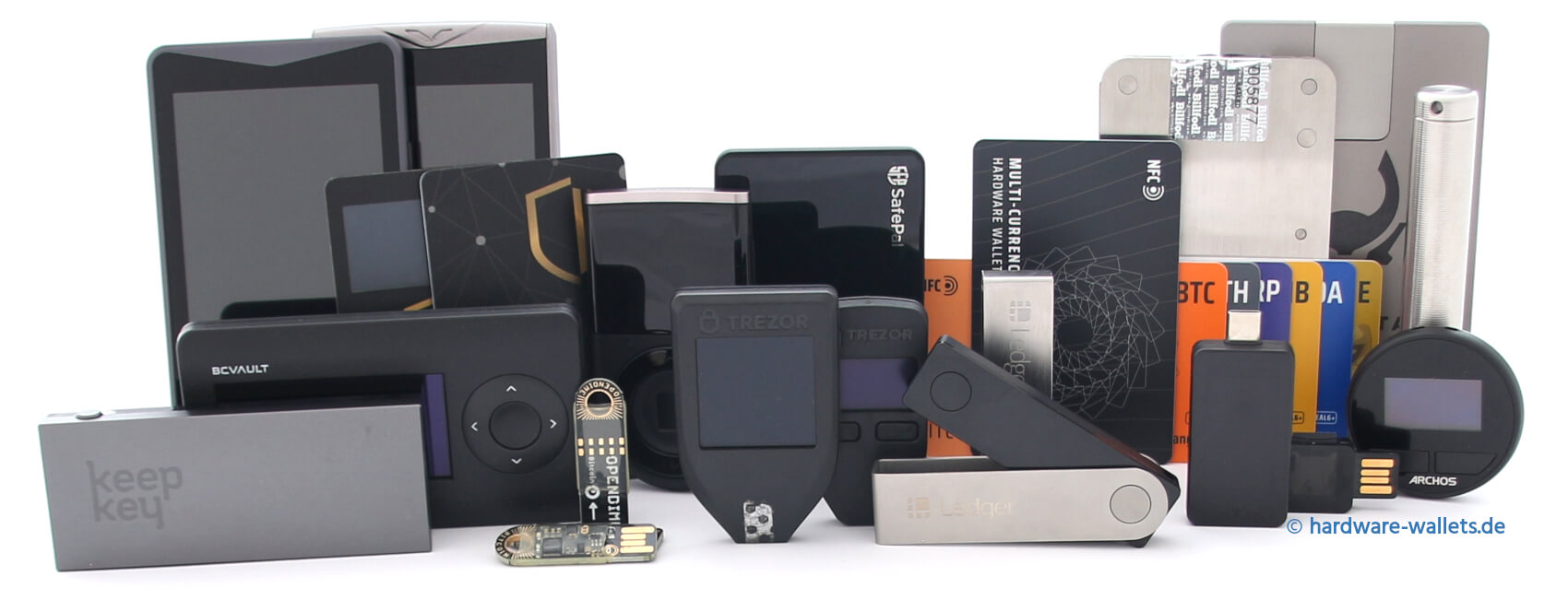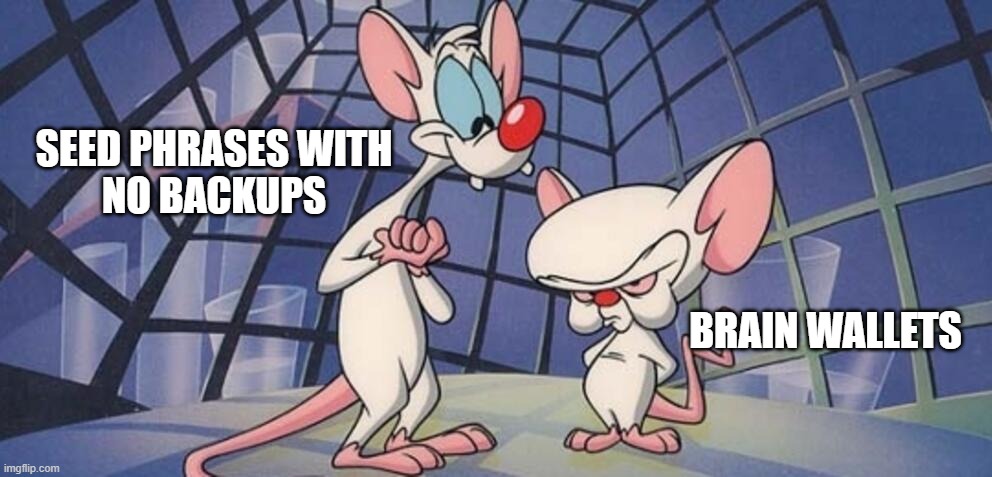Today, there are hundreds of different crypto wallet apps, which are sometimes called digital wallets. When it comes to using blockchains and their crypto assets, a wallet software is a must have. Wallets provide the interface to a blockchain and help users interact with it.
Without a crypto wallet, as a normal user you wouldn't get very far. It could be compared to the early days of the Internet in the 1990s, when people were wondering how they could ever be able to use it given the complexity to access it.
Then, browsers came along. That new type of application allowed technically unsavvy people to access the Internet in a simple and easy way. Soon after, a Cambrian explosion occurred and a wide variety of browsers helped millions of people access the Internet. Today, a few decades later, the Internet has well over 4.6 billion users. Almost 60 percent of the global population is now using the Internet through browsers every day.
Similarly, crypto assets are still in their "1990s" stage, and they will most likely be used by billions of people in the near future as crypto wallets improve and facilitate the use of the blockchain.
What does a wallet actually store?
A wallet's main function really is about storing and handling crypto assets. Even though we usually speak of digital wallets in analogy to physical wallets that we carry in our pockets, crypto wallets don't actually store any crypto assets. After all, a bitcoin does not really exist. It is merely a ledger entry on the Bitcoin blockchain.
What is actually stored in a crypto wallet are the seed phrase and its private keys that correspond to the very crypto assets at hand. If you lose access to your digital wallet with no way of retrieving it, your crypto still exists on the blockchain but cannot be used anymore as the corresponding private keys are lost.
Third-party involvement or online exposure?
When it comes to choosing a crypto wallet, you must basically ask yourself the following two questions and choose accordingly:
- Will I be using an online "hot" wallet or an offline "cold" wallet?
- Will I be using a third-party custodial wallet or a non-third-party non-custodial wallet?
Let's explain what these two questions mean.
Hot vs cold wallets
A key factor to categorize crypto wallets is the difference between hot and cold wallets, or if you prefer the distinction between online and offline wallets.
Hot wallets are crypto wallets that can be connected to the Internet in any way, shape or form.
As already laid out in the previous chapter on crypto storage, wallets that store private keys in digital form on a device connected to the Internet are vulnerable to attacks, and therefore "hot". Although most hot wallets protect your private keys through advanced encryption methods, there remain the risks of bugs in their code or of security vulnerabilities. The overwhelming majority of successful hacks have been carried out on hot wallets. Keeping large amounts of crypto assets in hot wallets is seen as poor security practice and therefore not recommended.
A hot wallet can be custodial, typically an account that you have on an exchange platform. Non-custodial hot wallets are usually mobile or desktop apps. There can also be custodial and non-custodial cold wallets, so make sure to study all the options and choose the best for you.
Nevertheless, many crypto users do use some type of a non-custodial hot wallet because of how convenient they are. It is advised to only keep limited amounts of crypto assets in hot wallets. As a rule of thumb, hot wallets should only hold amounts that you are comfortable using for daily use.
For larger sums, a cold wallet is a must. A cold wallet is an offline crypto storage solutions. Cold wallets let you manage your funds without their private keys ever being online. In most cases, when doing a transaction, it is signed with your private key on a secure enclave of a dedicated hardware device. Only the signed transaction leaves the device and is broadcasted to the Internet and the blockchain. With this security measure, it is much easier to prevent hackers and malware access your funds as several attack vectors can be curtailed. While some cold storage setups require you to have more than one computer (which makes them more complex than a hot wallet solution), the main exception are hardware wallets that provide both convenience and security.
Custodial vs non-custodial wallets
A custodial wallet - as its name suggests - is intermediated by a third-party. It is a wallet solution where a third party holds the private keys for you. This effectively means that it's not you but another party who controls the private keys to the crypto assets on your wallet. This other party can either be an exchange, a broker or a (crypto) bank.
As explained in the previous chapter, always remember that if you don't hold the seed phrase to your crypto assets, you don't ultimately own them.
So, when using a custodial wallets, trust in a third party is required. In a fundamental sense, they are really no different than traditional bank accounts. While this might make your crypto life easier, it's not really what the philosophy of bitcoin and cryptocurrencies is about.
It's non-custodial wallets that are much more in line with this philosophy. Non-custodial wallets refer to all types of storage solutions where you control the seed phrase of your crypto assets. With a non-custodial wallet, you and only you can access and control your funds. Nobody else can help you transfer funds or retrieve them for you, only you can initiate transactions with them. The advantage is also that nobody can seize or freeze them! There are different forms and types of non-custodial wallets, which are explained below.
The different types of crypto wallets
Today, there exist numerous different wallet types. There are web wallets, mobile or desktop wallets as well as hardware and paper wallets. Let's dive into each category!
![The different types of crypto wallets]()
Mobile wallets
Mobile wallets are apps that can be installed on a smartphone and are one of the easiest and most convenient ways to setup a non-custodial crypto wallet. In the Apple App Store or on Google Play, many different mobile wallets can be found and downloaded on your smartphone. Most of them will get you started by creating a new wallet and will walk you through the backup of your seed phrase.
A key convenience of mobile wallets is the possibility to scan QR codes, which allow to enter a crypto address without room for copying errors.
- Examples: Bridge Wallet, Edge Wallet, Trust Wallet
- Pros: Can be used anywhere, convenient, fast, more secure than web and desktop wallets. Phone features such as QR code scan.
- Cons: Exposed to mobile viruses and malware. A phone can also be easily lost or stolen.
Browser wallets
Browser wallets are plugins or extensions that need to be installed on a web browser. Their interface opens as a popup window, which can then be used to make transactions.
- Examples: MetaMask, Rabby Wallet
- Pros: Easy and fast to install, convenient to use.
- Cons: Vulnerable to hacks, malware and phishing attacks.
Web wallets
Web wallets are online wallets that are accessible through a web page. They let you control your crypto assets through an online gateway, the web browser, without the need to install any extra software.
- Examples: MyEtherWallet, MyCrypto
- Pros: Convenient, fast and broadly available. Let you access your crypto and make transactions in seconds.
- Cons: Because web wallets are online, they are at a greater risk of being exposed to malware and hackers.
Desktop wallets
Desktop wallets are similar to mobile wallets, they are software that you install on your computer and are usually non-custodial. They are a convenient way to store your crypto assets using your computer but be aware: the risks of hacks are also present with desktop wallets. Securing your computer is a must and a backup of the private keys should be made in any case. It is not recommended to store large amounts of coins and tokens on a desktop wallet, except in combination with a hardware wallet.
- Examples: Ledger Live, Exodus, Atomic
- Pros: Convenient, easy to use
- Cons: Vulnerable to the many virus and malwares targetting desktop computers
Hardware wallets
When it comes to retail usage of crypto assets, hardware wallets (also known as hard wallets) are the gold standard of storage and are the most popular method for storing cryptocurrencies securely.
![Hardware wallets from various manufacturers Crypto hardware wallets]()
Credit: hardware-wallets.de
Most of the time, they come in the form of UBS like devices that are specifically designed to store private keys. Hardware wallets are more secure than mobile wallets or desktop wallets, mainly because they are incapable of connecting to the Internet directly.
The way they usually work is through a secure enclave on their hardware (hence their name), where transaction signing takes place. When a transaction is signed, it is done in a secure, hermetic offline environment using the relevant private key. Only upon successful validation by the user can a transaction be sent to the network. Validation or confirmation always needs to happen through the user pressing a physical button or touching a touchscreen. There is no way a hacker that is not present can initiate a transaction from a hardware wallet. When sending a transaction as a user though, you always want to make sure the recipient's address on the hardware wallet is the correct one. This way you are sure that you are not being shown a wrong address and that the funds will be sent to the right place.
Once the signing is done, only the signed transaction leaves the hardware wallet and is broadcasted onto the blockchain. This setup significantly reduces the attack surface for hackers, since the device cannot be manipulated remotely. As other wallets, a hardware wallet also has to be backed up by a seed phrase. In case of loss or theft, assets stored on the hardware wallet can be recovered with the seed phrase on a new device. As always, the safe storage of the seed phrase is of uttermost importance.
- Examples: Ledger, Trezor, Bitbox
- Pros: Hardware wallets are one of the safest crypto wallet options. They are perfect for long-term holders storing a great amount of crypto assets.
- Cons: Rather expensive. Although they have great interfaces, the whole setup is not very intuitive for newcomers.
Paper wallets
Another cold storage wallet solution are paper wallets, also known as a physical wallet. Private keys as well as public addresses are printed or written down on a sheet of paper. Paper wallets can be created with an open source paper wallet generator. Users are recommended to be offline when generating the keys and to delete their browser history once the keys are generated. For maximum security, the use of a brand-new computer is recommended to avoid malware interference. Also, when a paper wallet created by a third-party is used, there exists the risk that the private key on the paper wallets is also kept by the issuer.
Compared to a hardware wallet, paper wallets can be seen as quite a hassle. It's safe to say that hardware wallets have replaced paper wallets, at least when it comes to funds that need to be stored securely but need to be used regularly.
- Pros: Paper wallets can be created by oneself by following certain instructions. If done right, they are very secure. They can also be a nice gift to introduce someone to crypto.
- Cons: These types of wallets are rather inconvenient as you will need to make several manipulations in order to use and transfer funds stored on them. They are also considered unsafe as they can be easily lost, destroyed or stolen.
Brain wallets
Because at their core crypto assets represent information, their respective private keys can also be "stored" in your own brain by simply memorizing the seed phrase. It's only 12 words to remember after all! If the seed phrase is not written down everywhere else, the relevant crypto assets can be thought of only existing in the owner's head.
![Brain wallets]()
Creating a brain wallet works by using an offline seed phrase generating software or the seed phrase can also be created using several unrigged dices.
- Pros: This is a very low-tech solution but if conducted and set up correctly, it is a great seed phrase backup option as it does not exist anywhere else than in the owner's brain.
- Cons: The brain wallet's biggest strength can also become its biggest weakness as human memory is fallible. If you forget the memorized seed phrase, which may happen because of an accidental brain damage for example, crypto assets stored that way would be irreversibly lost.
Wrapping it up: a setup example that works for most
Based on all the information we've given you in both this chapter and the previous one, you should have a good idea by now of what is the best crypto wallet setup for your own needs.
To conclude this article, we will still give an example of a convenient and safe setup that should fit the needs of the vast majority of people reading this who mean to deal with cryptocurrencies seriously with Bridge Wallet:
13 minutes|Pascal Hügli|Published 2021-10-20|Updated 2024-06-13







